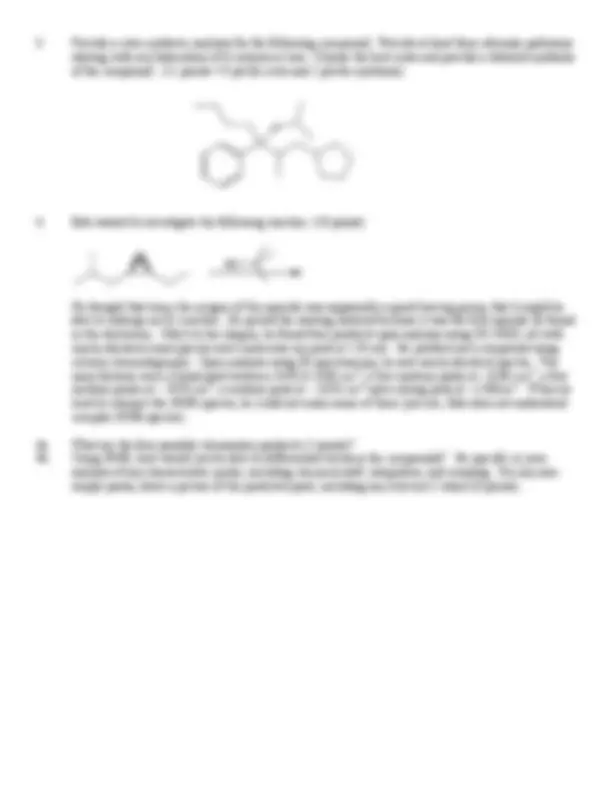



Study with the several resources on Docsity

Earn points by helping other students or get them with a premium plan


Prepare for your exams
Study with the several resources on Docsity

Earn points to download
Earn points by helping other students or get them with a premium plan
Community
Ask the community for help and clear up your study doubts
Discover the best universities in your country according to Docsity users
Free resources
Download our free guides on studying techniques, anxiety management strategies, and thesis advice from Docsity tutors
A problem set in organic chemistry for the course chem 231b at whittier college. It includes various organic chemistry reactions with missing components, requiring students to identify major products or missing reagents, and to explain reaction mechanisms. It also includes a retro synthetic analysis exercise.
Typology: Assignments
1 / 2

This page cannot be seen from the preview
Don't miss anything!


Whittier College
40 Points Total Due Thursday, March 13, 2003 @ 12:00 p.m.
OTos (^) 1.
KO
OTos
HO
O
H
O
O
O
H
H
O-Methyl TetrahydroCarbinol (M-THC)
O
O
H
H
OTos Cl
O KO
He thought that since the oxygen of the epoxide was supposedly a good leaving group, that it might be able to undergo an E2 reaction. He picked the starting material because it was the first epoxide he found in the stockroom. Much to his chagrin, he found four products upon analysis using GC-MSD, all with nearly identical mass spectra and a molecular ion peak at 128 m/z. He purified each compound using column chromatography. Upon analysis using IR spectroscopy, he saw nearly identical spectra. The main features were a broad peak between 3450 & 3200 cm-1^ , a few medium peaks at ~3100 cm-1^ , a few medium peaks at ~ 2950 cm-1^ , a medium peak at ~ 1650 cm-1^ and a strong peak at ~1100cm-1^. When he tried to interpret the NMR spectra, he could not make sense of them (you see, Bob does not understand complex NMR spectra).
4a. What are the four possible elimination products (2 points)? 4b. Using NMR, how would you be able to differentiate between the compounds? Be specific in your analysis of any characteristic peaks, including chemical shift, integration, and coupling. For any non- simple peaks, show a picture of the predicted peak, including any relevant J values (8 points).
O